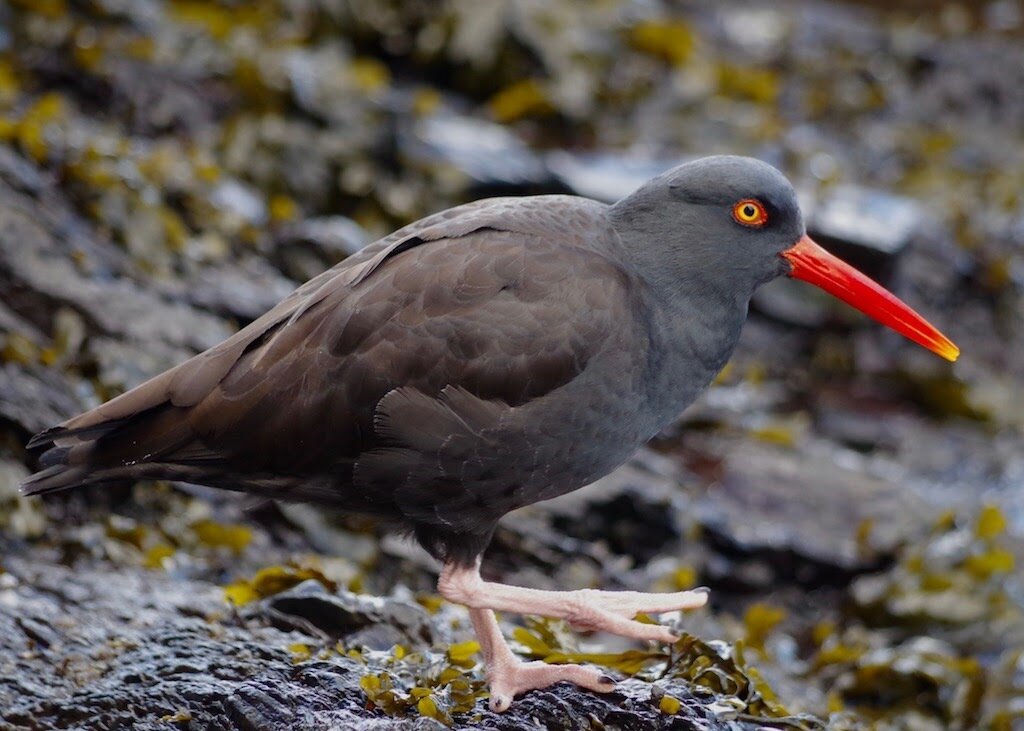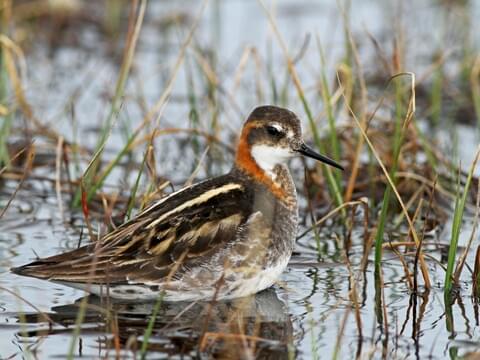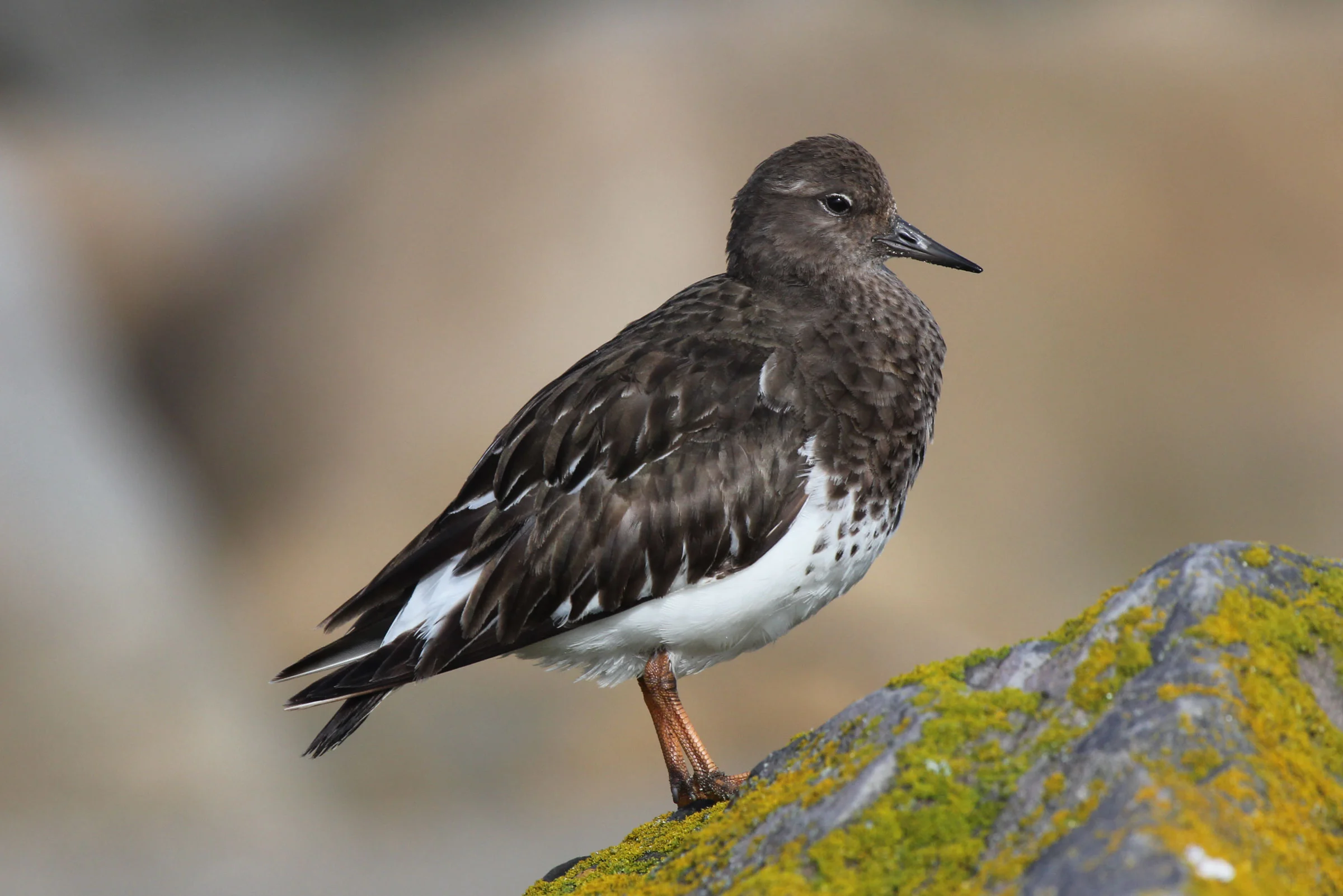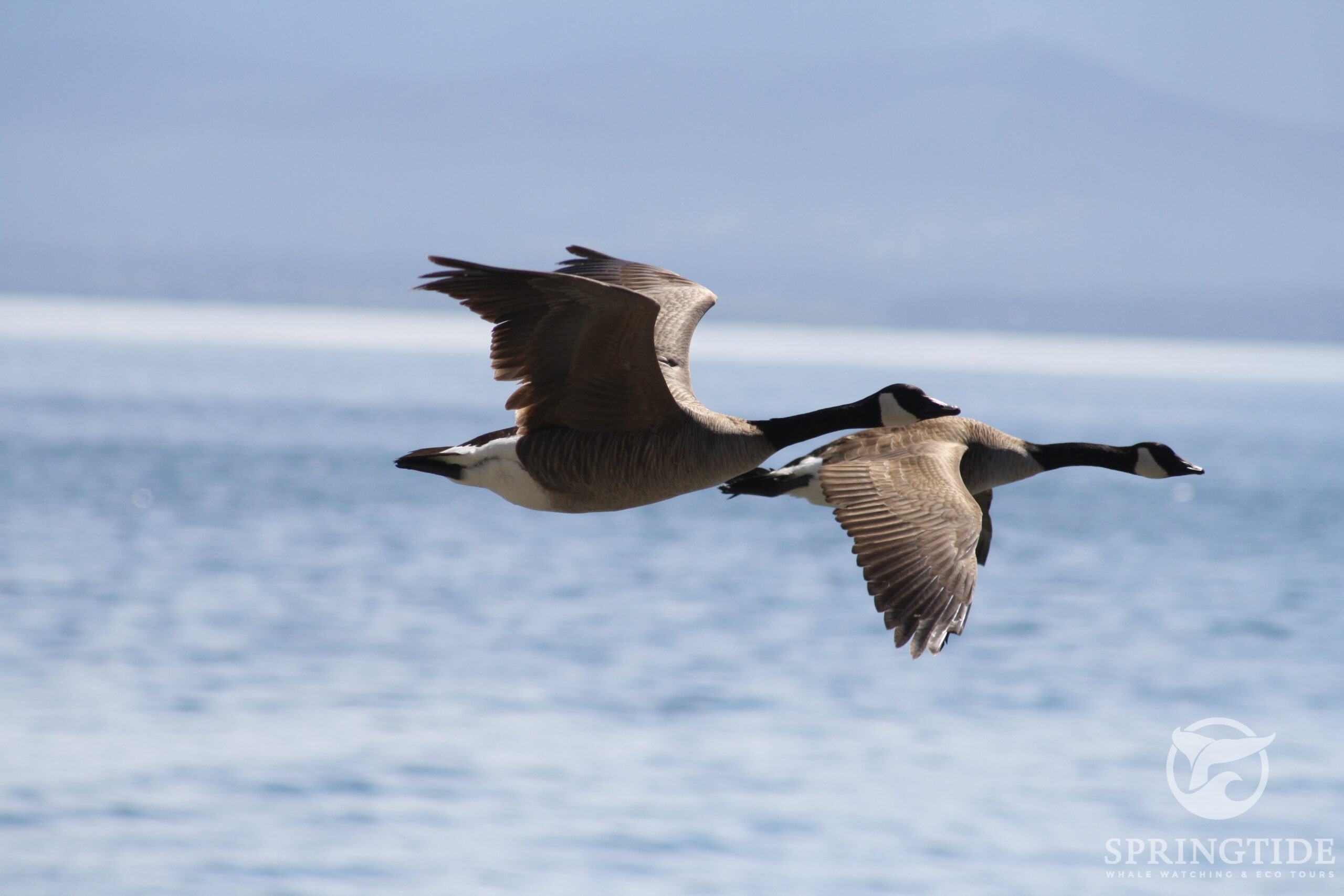Who doesn’t love birds! Scroll down to learn about:
- Black Oystercatcher
- Red-necked Phalarope
- Black Turnstone
- Brown Pelican
- Great Blue Heron
Black Oystercatcher

Latin Name: Haematopus bachmani
Distinguishing Features:
Black feathers, bright red beak and red-rimmed eyes. Juveniles will have a dark tip on their beak.
Maximum Size and Age:
A crow-sized bird, 16.5-18.5 in (42-47 cm) tall and weighing 17.6-24.7 oz (500-700 g). The oldest on record was recaptured and released in British Columbia at over 6 years old.
Fun Facts:
-
These are very noisy birds, they search for food by probing with their long beaks.
-
South of Oregon these birds have increasingly more white feathers and brown on abdomen, whereas to the North they are entirely black.
Common Behaviour:
Lives on rocky coasts, nests above high tide line, picks mussels and limpets off of rocks in the intertidal zone to eat.
Conservation Status:
Black Oystercatchers are on the 2014 State of the Birds watch list, which lists birds that are at risk of becoming threatened or endangered without conservation action.
Red-Necked Phalarope

Latin Name: Phalaropus lobatus
Distinguishing Features:
Grey and white are the non-breeding colours. Turns rusty red on the neck during breeding. Slender pointed beak.
Maximum Size and Age:
A robin-sized bird, 7.1-7.5 in (18-19 cm) long and weighing 0.9-1.4 oz (27-40 g). Their wingspan ranges from 12.6-16.1 in (32-41 cm). The oldest Red-necked Phalarope on record was recaptured at 5 years old, in Alaska
Fun Facts:
-
Females are more brightly coloured than males, the opposite of many bird species. This is indicative of their mating behaviour where females compete for males. Females will depart as soon as the eggs are laid leaving males to take care of the young. Females will then often seek out another mate.
Common Behaviour:
Only seen in British Columbia during their migration between the Arctic and South America. For a shore bird they are very aquatic, spending most of their time on the water. They eat small zooplankton by spinning around at the surface to stirring the plankton up in the water. Red-necked Phalaropes seek out areas with upwelling currents where food is plentiful.
Conservation Status:
The Red-necked Phalarope is widespread and not listed as a declining species. However, any declines may not be detected due to a lack of information about present and historical populations. They breed in the Arctic and forage at sea. The remote nature of their habitats make Red-necked Phalaropes difficult to study.
Black Turnstone

Latin Name: Arenaria melanocephala
Distinguishing Features:
Brown feathers with white underside, thin, slightly upturned beak, and long legs
Maximum Size and Age:
A robin-sized bird, 8.7-9.8 in (22-25 cm) long and weighing 3.5-6.0 oz (100-170 g). The oldest on record was 8 years old when recaptured in Alaska.
Fun Facts:
-
Searches for food by turning over stones.
- They are extremely aggressive towards avian predators and will chase jaeggers and gulls away, straying over 100m from their territory to do so.
Common Behaviour:
Breeds in coastal meadows with sparse vegetation. Spends winters on rocky, exposed coastlines. Feeds on limpets, barnacles, and other crustaceans.
Conservation Status:
Listed as at risk of becoming threatened or endangered without conservation action.
Brown Pelican

Latin Name: Pelecanus occidentalis
Distinguishing Features:
Brown plumage. Pelicans have a large bill with a stretchy throat. Their throat will expand to accommodate a mouthful of water and food.
Maximum Size and Age:
A very large bird, 39.4-53.9 in (100-137 cm) long, weighing 70.5-176.4 oz (2000-5000 g). Their wingspan averages 78.7 in (200 cm). The oldest Brown Pelican on record was 43 years old.
Fun Facts:
-
Pelicans incubate their eggs with the webbed skin on their feet. Historically the pesticide DDT caused declines in Brown Pelican populations. The pesticide causes them to lay thinner eggs which crack under the weight of the parents. Since DDT is now regulated the pelicans have recovered.
-
They are only one of two species of pelican that plunge-dive for food.
- Brown Pelicans are a rare species in British Columbia, they are more common further South along the Pacific Coast.
Common Behaviour:
Brown Pelicans feed by plunge diving. High above the water they will spot their target meal. They then drop straight down into the water on top of the fish. The splash looks like a whales blow. The impact of the dive will stun the fish, which the pelicans then scoop up easily. Any extra seawater is forced out of the pelican’s bill while the fish are kept inside their mouth.
Conservation Status:
Populations are recovering and abundant after suffering from the toxic effect of DDT pesticide use that brought them to the brink of extinction.
Great Blue Heron

Latin Name: Ardea herodias
Distinguishing Features:
The largest of the birds on this list. Great Blue Herons are very tall, with skinny legs, and dusty grey-blue feathers. They will fold their neck during flight.
Maximum Size and Age:
Great Blue Heron wings span up to 2m (6.5ft) and they can be 1.3m (4.4 ft) tall. The oldest Great Blue Heron on record was at least 24 years, 6 months old when it was found in Texas.
Fun Facts:
-
Great Blue Heron will eat frogs, fish, and mice.
- Great Blue Herons often congregate at fish hatcheries at the annoyance of fish farmers. A study shows that the herons prey mostly on weak and sick fish that would have died soon anyways.
Common Behaviour:
Commonly seen flying over the Victoria Harbour and standing at the waters edge or on docks.
Conservation Status:
Historically there was a large nesting colony in Beacon Hill Park in Victoria, B.C. However, it was attacked by Bald Eagles which nearly eliminated the entire colony. Today, a few nests remain in Beacon Hill Park.
Read more about the Great Blue Heron here.
Check out our other blog post about Marine Birds here.
Facts courtesy of The Cornell lab of Ornithology “All about Birds”.
Written by Stefania, Marine Biologist

